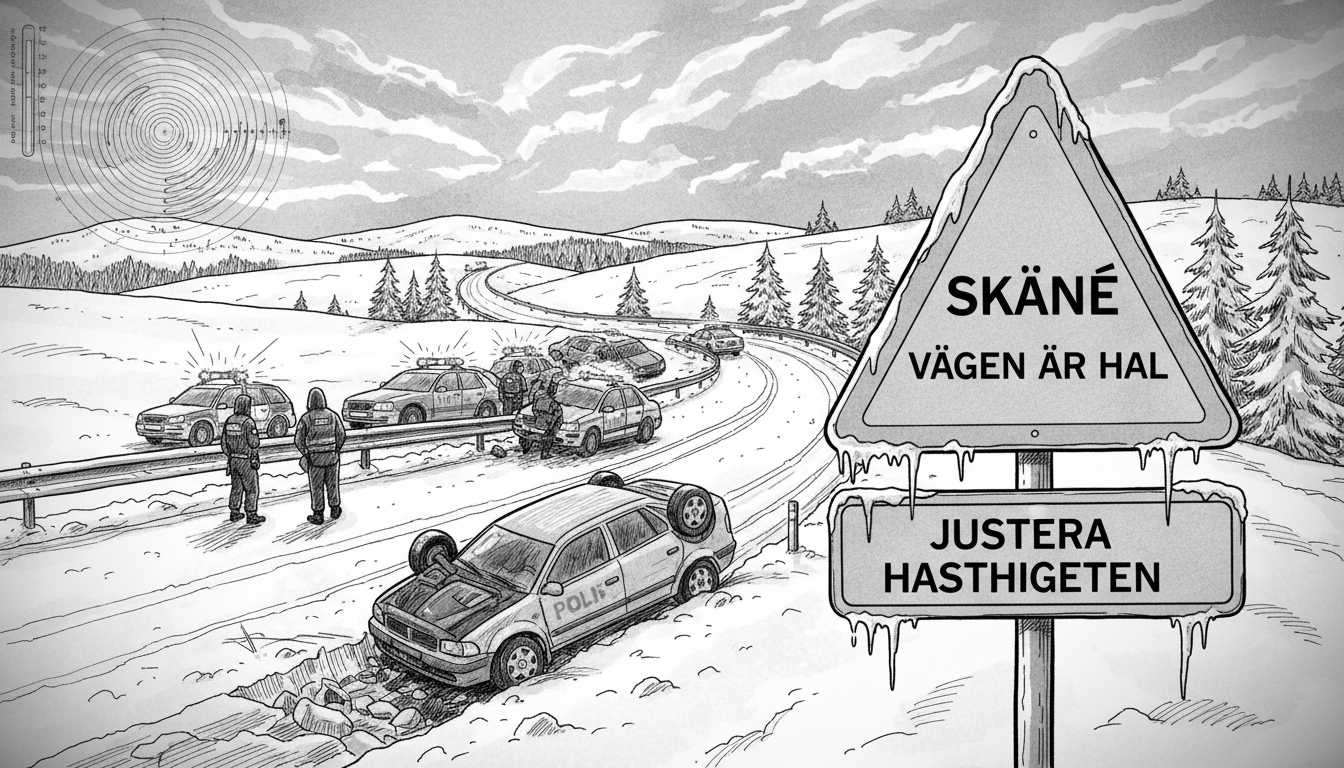Dangerous road conditions have caused multiple traffic accidents across Skåne in southern Sweden. Police responded to numerous incidents during Monday morning as freezing temperatures created hazardous driving conditions. The situation developed after rainfall turned to ice when temperatures dropped below freezing overnight.
Police spokesperson Filip Annas addressed the situation directly. He said drivers must adapt their speed to current road conditions. Annas noted that winter tires are not legally required in Sweden. But he emphasized their appropriateness during cold weather periods.
Meteorologist Linus Falk provided the weather context for these dangerous conditions. He explained that most of Skåne experienced this freezing pattern. Only the westernmost areas remained above freezing. Falk predicted temperatures would rise above freezing during the afternoon. Then another freezing period would likely occur during the evening hours.
The police confirmed multiple traffic accidents occurred throughout the region. These incidents resulted specifically from the slippery road surfaces. Authorities repeatedly stressed the importance of adjusting driving behavior to match road conditions.
This situation highlights Sweden's unique approach to winter tire regulations. Unlike neighboring Nordic countries, Sweden doesn't mandate winter tires by law. Instead, drivers must ensure their vehicle is adapted to current road conditions. This principle-based approach places responsibility on individual drivers.
International readers might find Sweden's tire regulations surprising. Many countries with similar winter conditions implement strict winter tire requirements. Sweden's system relies on driver judgment and the legal requirement to drive safely according to conditions. This incident demonstrates how quickly conditions can change in southern Sweden during transitional seasons.
The economic impact of such weather events extends beyond immediate accidents. Businesses face delivery delays and employees arrive late to work. Insurance companies typically see increased claims during such periods. These incidents serve as seasonal reminders for all drivers to prepare their vehicles for changing conditions.
Road maintenance crews remain active throughout Skåne. They work to treat major highways and problem areas. But secondary roads often remain hazardous until temperatures stabilize. Drivers should check weather forecasts and road condition reports before traveling during these transitional periods.

